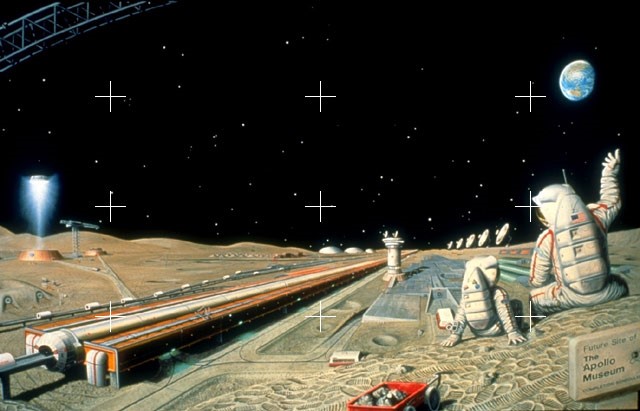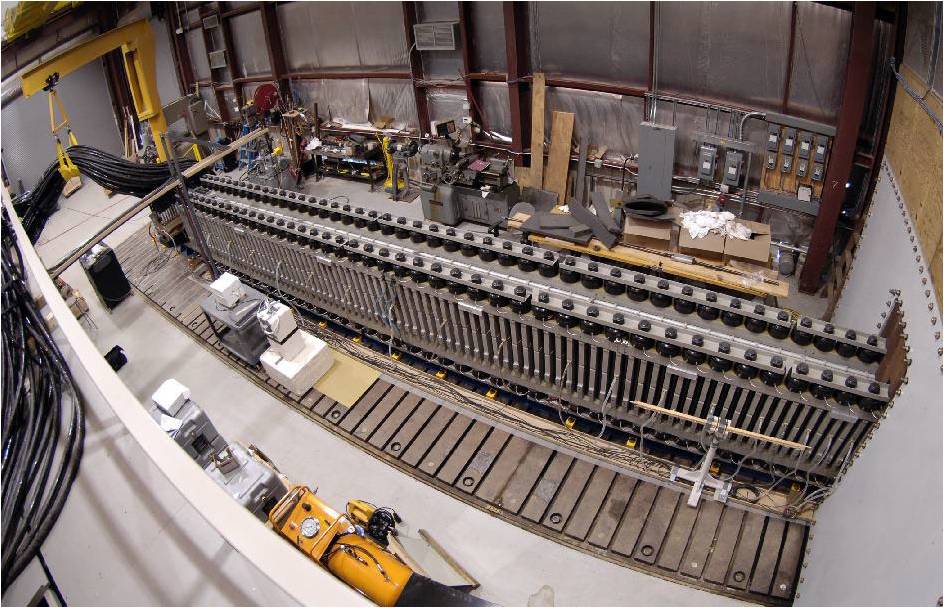
Could we launch resources from the moon with electromagnetic railguns?

In 1974, the late Princeton University professor and space visionary Gerard O'Neill proposed using electromagnetic rail guns to lob payloads from the moon.
O'Neill suggested using "mass drivers" based on a coil gun design to accelerate a non-magnetic object. One application for mass drivers was launching moon-derived materials into lunar orbit for in-space manufacturing. O'Neill also worked at MIT on mass drivers, along with colleague Henry H. Kolm, and a group of farsighted student volunteers, to fabricate their first mass driver prototype. Backed by grants from the Space Studies Institute, later prototypes improved on the mass driver concept.
That was five decades ago. Catapult yourself to today and ask this question: What's the U.S. Navy's Gerald R. Ford nuclear aircraft carrier got to do with the moon?
Future lunar economy
Late last year, General Atomics Electromagnetic Systems filed a final report to the Air Force Office of Scientific Research's (AFOSR). That report was titled "Lunar Electromagnetic Launch for Resource Exploitation to Enhance National Security and Economic Growth."
The author of that appraisal is Robert Peterkin, director of operations for the organization's Albuquerque, New Mexico office.
Underscored in the 30-page document is that the moon is rich in useful resources, including silicon, titanium, aluminum and iron. The prospect of tapping into lunar water also looms large.
"A not-too-distant future lunar economy will make use of these lunar resources to resupply, repair, and refuel spacecraft in lunar orbit at lower cost than delivering terrestrial resources from Earth's deep gravitational well," explains the report.
Breaking space news, the latest updates on rocket launches, skywatching events and more!
Machinery, structures, systems
Electromagnetic launches of material from the lunar surface, the report continues, can be significantly more efficient than conventional rocket launches that rely on chemical fuels that are imported from the Earth to the moon.
Outlined in the assessment are recommendations on how to mature the technology necessary to launch extracted and processed lunar material into cislunar space to sustain a set of emerging space missions.
A particularly important aspect of developing a lunar economy, the report advises, is moving mass off the surface of the moon reliably, affordably, and safely. "Undoubtedly, the first spiral of a development cycle for a lunar ecosystem will rely of supply of machinery, structures, and supporting systems from the Earth."
Superior choice
Using lunar resources to repair and resupply cis-lunar spacecraft requires advances in several technologies including a reliable way to move material off the lunar surface, Peterkin told Space.com.
For that task, a modern electromagnetic launcher is a superior choice, Peterkin said, because it can use abundant solar energy as a prime energy source instead of importing chemical rocket fuel from Earth.
"The U.S. government should fund an evolution of the existing electromagnetic aircraft launch system, now operating reliably on the U.S. Navy's Gerald R. Ford nuclear aircraft carrier," Peterkin points out.
Manufactured by General Atomics, that carrier-based hardware is called the Electromagnetic Aircraft Launch System (EMALS).
Path to get there
Peterkin said that moving this Earth-based technology down the road involves achieving higher speed, at lower mass — showcasing work that accelerates into fast forward mode a lunar launch capacity.
The lickety-split speed required to hurl pound-class payloads from lunar terrain into a low circular orbit around the moon is 3,758 miles per hour (1.68 kilometers per second).
"To prove viability, we need to demonstrate that this approach can achieve a lunar orbit speed," said Peterkin, "for at least 100 launches without needing to replace launcher components."
As the report to the Air Force Office of Scientific Research contends, "while it is important to envision a mature state in which a self-sustaining lunar ecosystem extracts, processes, and launches material into lunar space to construct, supply, and sustain cislunar spacecraft and space settlements, it is equally important to establish a path to get there."

Leonard David is an award-winning space journalist who has been reporting on space activities for more than 50 years. Currently writing as Space.com's Space Insider Columnist among his other projects, Leonard has authored numerous books on space exploration, Mars missions and more, with his latest being "Moon Rush: The New Space Race" published in 2019 by National Geographic. He also wrote "Mars: Our Future on the Red Planet" released in 2016 by National Geographic. Leonard has served as a correspondent for SpaceNews, Scientific American and Aerospace America for the AIAA. He has received many awards, including the first Ordway Award for Sustained Excellence in Spaceflight History in 2015 at the AAS Wernher von Braun Memorial Symposium. You can find out Leonard's latest project at his website and on Twitter.



